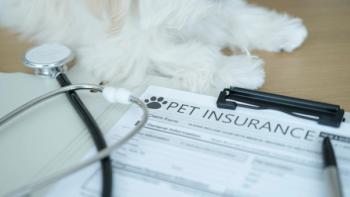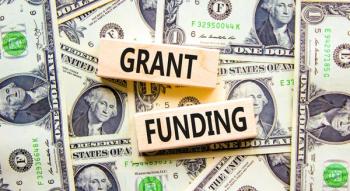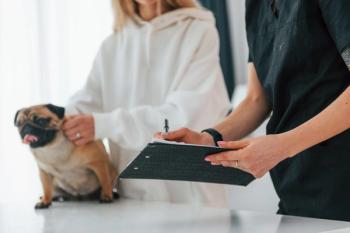
Do your pharmacy fees need an overhaul?
Brief message for the practice selling $1 cat toys: It costs well over $2 just to print out an invoice
There seems to be a new and dangerous trend among recent veterinary graduates: For whatever reason, they want to write prescriptions for everything and not bother with keeping or dispensing drug inventory.
On the surface, it sounds like a great idea. After all, physicians do it, so why can't we?
The first and most obvious answer is that physicians get paid well for cranial exercises and we do not. Our clients more readily pay for what they are able to haul out to their SUVs than for the brilliance of our diagnosis or our artistic skill in removing offending organs.
We need to keep a pharmacy to provide drugs not readily available at their local pharmacy — in the strengths needed — as much as we need to provide another income source to supplement the public's indifference to our high operating costs. That means that we must profit from the pharmacy.
Keeping pharmacy costs down by effective purchasing is just one side of the pharmacy-productivity equation. True productivity is keeping fees up while keeping expenses down. Let's look at common strategies:
Despite our years of recommending against the procedure, there still are practices that double and triple drug costs to arrive at the selling fees. Anyone not using about $20 as a basic packaging fee plus double the pill cost is probably earning less than 20 percent on their pharmacy. (See footnote)
The typical solo practice spends about 15 percent of any month's gross income on drug/dietary purchases. That amounts to about $10,000 a month for a practice grossing $700,000 a year. Management of this expense is crucial to financial success.
An easy pharmacy-budget rule for your technician to follow is to allow no more than 15 percent of last month's gross revenues for this month's purchases. Keep track of purchases. When the 15 percent is gone, buy no more. Discipline is paramount.
Our average annual tangible and intangible expenses for any prescription today include:
- 1. Fair return on investment for drug-storage areas.
Example: If 50 square feet cost $5,000 or more to build, a 15 percent return = $750 a year
- 2. Heating or air conditioning those spaces costs at least another $750 a year.
- 3. Loss of interest on invested capital: $100,000 average for a solo practice @ 5 percent = $5,000 a year.
- 4. Waste from expirations, breakage, out of vogue, etc. = at least $1,500 a year.
What really adds up is the cost of staff labor — about 20 percent of gross. When you use that labor to provide services, you must mark it up effectively. Your accountant can tell you that the average technician minute must be charged at about 75 cents.
- 5. Staff labor to order, sign for, unpack, check packing slips, invoices and statements, bookkeepers, writing checks, accounting, etc., averages 3 hours per week = $7,000 a year.
- 6. Vial, typing labels, entering into computer, printing bills (assume 7 minutes) = $5.25 each prescription, or about $16,000 a year.
- 7. Time needed to explain usage, staff time to count out medications = another $5.25 per prescription and another $16,000/year.
Put it all together and, based on six to 10 prescriptions a day, we are not talking much less than $45,000 annually and that does not include any medication, just overhead. You do the math: That's at least $19 per prescription.
We recommend $19.85 at this time for a minimum prescription dispensing fee.
So, if a pill costs you a dime and you dispense 30 of them, you should double your cost 30 x $0.10 x 2 = $6 plus $19.85 = $25.85, but only if you intend to make a profit. Set your computer for a minimum prescription fee of $22.85 and prevent losses through the cracks in your system.
These dispensing fees are used for pills, ointments, liquids and anything requiring labeling and professional judgment. Over-the-counter products cannot be dispensed profitably for less than 2.6 times invoice cost. Don't forget to include shipping and taxes, if applicable, in the base.
Some readers are laughing now because they are charging more than that, but too many are not and are subsidizing their clients big time. Then they wonder why their practice is worth so little when they want to sell it at retirement. By then it's too late.
Pharmacy-fee overhauls literally can be made overnight (except for the prepackaged items such as 30 prednisone for $15, etc., which require a few months' time), but once you realize that you were charging less than your actual cost, it's not so difficult to say this to the client who demands to know why the fee went up: "We found out that the drug was costing us more than we were charging on it."
Or, just tell the truth: "It went up!"
Gerald Snyder
Dr. Snyder, a well-known consultant, publishes Veterinary Productivity, a newsletter for practice productivity. He can be reached at 10737 Knight Castle Drive, Charlotte NC 28277; (800) 292-7995;
Footnote:
Historical (hysterical) note: When I first wrote about pharmacy pricing in 1980, the packaging fee was $3.50. The most prevalent office/examination fee at that time was $8. Many veterinarians did not charge for drugs. They included it in the office visit.
Newsletter
From exam room tips to practice management insights, get trusted veterinary news delivered straight to your inbox—subscribe to dvm360.






